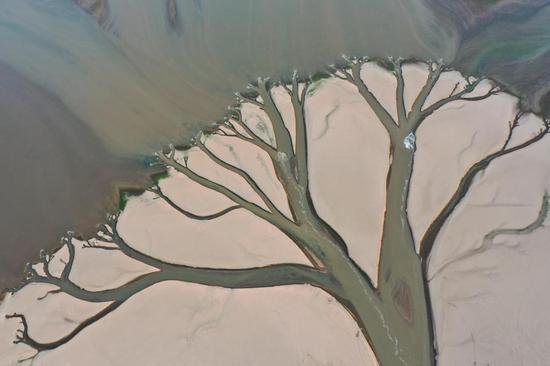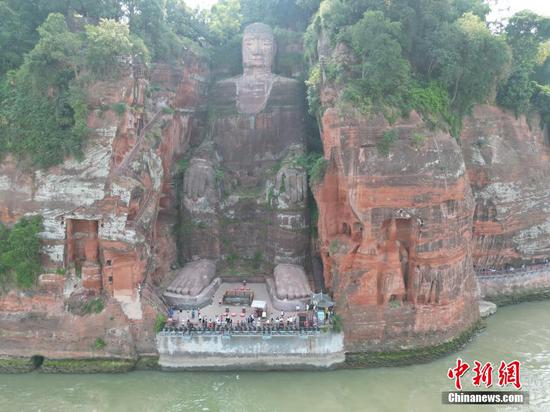Introduction
Speaker of the U.S. House of Representatives Nancy Pelosi made a provocative visit to China's Taiwan region recently in disregard of the Chinese side's stern warnings. The visit seriously infringes on China's sovereignty and security, seriously undermines China's territorial integrity, seriously jeopardizes peace and stability across the Taiwan Strait, and seriously erodes the political foundation of China-U.S. relations. The Chinese side has been compelled to take countermeasures. The U.S. side has been pushing disinformation to confuse right and wrong and confound black and white, criticizing China's legitimate countermeasures and trying to mislead the world about the Taiwan question. It is necessary to set the record straight with facts and lay bare the U.S.'s hegemonic nature and gangster logic.
Fact No. 1: The one-China principle is the political foundation of China-U.S. relations.
The meaning of this principle is clear and accurate. There is but one China in the world, Taiwan is part of China, and the Government of the People's Republic of China (PRC) is the sole legal government representing the whole of China. This is the original meaning of one China, and a universal consensus of the international community. The United States, while claiming to uphold the one-China policy, is in effect using the “salami tactic” to distort, falsify, obscure and hollow out the one-China principle.
Taiwan has belonged to China since ancient times. This claim has a sound basis in history and jurisprudence.
A large number of historical records and annals document the development of Taiwan by the Chinese people in earlier periods. The earliest references are to be found in 230 A.D. during the Three Kingdoms Period. Starting from the Song and Yuan dynasties, central governments of China had set up administrative bodies to exercise jurisdiction over Penghu and Taiwan. After mid-16th century during the Ming dynasty, official documents began to use the name Taiwan formally. In 1624, Dutch colonialists invaded and occupied the southern part of Taiwan. In 1662, national hero Zheng Chenggong led an expedition to expel the Dutch occupiers and recover Taiwan. Subsequently, the government of the Qing dynasty increased its administrative bodies in Taiwan gradually. In 1684, a Taiwan prefecture administration was set up under the jurisdiction of Fujian Province. In 1885, Taiwan was turned into a full province.
In July 1894, Japan launched a war of aggression against China known as the First Sino-Japanese War. In April 1895, the defeated Qing government was forced to cede Taiwan and the Penghu Islands to Japan. During the Chinese People's War of Resistance Against Japanese Aggression, the Communist Party of China (CPC) made clear propositions for the recovery of Taiwan. During a conversation with U.S. journalist Nym Wales on 15 May 1937, Comrade Mao Zedong said that China's goal was to achieve a final victory in the war — a victory that would not only recover the occupied Chinese territories in Northeast China and to the south of the Shanhai Pass, but also secure the liberation of Taiwan.
On 1 December 1943, China, the United States and the United Kingdom issued the Cairo Declaration, stating that it was the purpose of the three allies that all the territories Japan had stolen from China, such as Northeast China, Taiwan and the Penghu Islands, should be restored to China. On 26 July 1945, China, the United States and the United Kingdom signed the Potsdam Proclamation, subsequently joined by the Soviet Union. It reiterated that “The terms of the Cairo Declaration shall be carried out.” In September 1945, Japan signed the instrument of surrender, in which it promised that it would faithfully fulfill the obligations laid down in the Potsdam Proclamation. On 25 October, the Chinese government announced that it was resuming the exercise of sovereignty over Taiwan, and the ceremony to accept Japan's surrender in Taiwan Province of the China war theater of the Allied powers was held in Taipei. From that point forward, China had recovered Taiwan de jure and de facto through a host of documents with international legal effect.
On 1 October 1949, the Central People's Government of the PRC was founded, replacing the government of the Republic of China to become the only legitimate government representing the whole of China. The new government replaced the previous one in a situation where China, as a subject under international law, did not change and China's sovereignty and inherent territory did not change. As a result, the government of the PRC should naturally enjoy and exercise China's full sovereignty, which includes its sovereignty over Taiwan. As a result of the civil war in China and the interference of external forces, the two sides of the Taiwan Strait have fallen into a state of protracted political confrontation. But the sovereignty and territory of China have never been divided and will never be allowed to be divided, and Taiwan's status as part of China's territory has never changed and will never be allowed to change.
Resolution 2758 of the United Nations General Assembly established the one-China principle that was widely observed by the international community.
At its 26th session in October 1971, the United Nations General Assembly adopted Resolution 2758, which undertook “to restore all its rights to the People's Republic of China and to recognize the representatives of its Government as the only legitimate representatives of China to the United Nations, and to expel forthwith the representatives of Chiang Kai-shek from the place which they unlawfully occupy at the United Nations and in all the organizations related to it”. This resolution settled once and for all the political, legal and procedural issues of the representation of the whole of China, Taiwan included, in the United Nations. It also made it clear that there is but one seat of China in the United Nations, and there is no such thing as “two Chinas” or “one China, one Taiwan”. The specialized agencies of the United Nations later adopted further resolutions to restore to the PRC its lawful seat and expel the representatives of the Taiwan authorities.
It was clearly stated in the official legal opinions of the UN Secretariat that “the United Nations considers ‘Taiwan' as a province of China with no separate status”, and the “‘authorities' in ‘Taipei' are not considered to... enjoy any form of government status”. In practice, Taiwan is referred to at the United Nations as “Taiwan, Province of China”.
Upholding the one-China principle is a political commitment made by the United States. It is also the prerequisite and basis for the establishment of China-U.S. diplomatic relations.
In the Shanghai Communiqué in 1972, the United States expresses clearly that “The United States acknowledges that all Chinese on either side of the Taiwan Strait maintain there is but one China and that Taiwan is a part of China. The United States Government does not challenge that position.”
In the Joint Communiqué on the establishment of diplomatic ties in 1978, the United States expresses clearly that “The Government of the United States of America acknowledges the Chinese position that there is but one China and Taiwan is part of China. The United States of America recognizes the Government of the People's Republic of China as the sole legal Government of China. Within this context, the people of the United States will maintain cultural, commercial, and other unofficial relations with the people of Taiwan.”
In the Joint Communiqué on 17 August 1982, the United States expresses clearly that “In the Joint Communiqué on the Establishment of Diplomatic Relations on January 1, 1979 issued by the Government of the United States of America and the Government of the People's Republic of China, the United States of America recognized the Government of the People's Republic of China as the sole legal Government of China, and it acknowledged the Chinese position that there is but one China and Taiwan is part of China. The United States Government has no intention of infringing on Chinese sovereignty and territorial integrity, or interfering in China's internal affairs, or pursuing a policy of ‘two Chinas' or ‘one China, one Taiwan'.”
The United States keeps challenging the one-China principle through disinformation and misinformation activities.
According to international law, the United States should honor its commitments with goodwill and good faith. It cannot refuse to perform its commitments or obligations under international law by citing its domestic legal provisions, or unilaterally distort China-U.S. joint communiqués based on its after-the-fact, secret assurances. However, after the George W. Bush administration took office in 2001, the United States put its own Taiwan Relations Act before the three joint communiqués. The Trump administration, in the latter half of its term, blatantly inserted the Six Assurances to Taiwan, something it had long kept secret, in its formulation of the one-China policy. The U.S. side deleted key statements such as “Taiwan is part of China” from its State Department website. After Pelosi's visit to Taiwan, the United States, together with its allies, issued a so-called statement that attempts to designate situations where the one-China policy is “applicable” and leaves room for arbitrary interpretation.
In recent years, the United States has neglected the Cairo Declaration, the Potsdam Proclamation and other international legal documents, falsely claimed that Resolution 2758 did not conclusively resolve the issue of Taiwan's representation, and played up the illegal and invalid Treaty of San Francisco. It has professed that the status of Taiwan has yet to be determined, and declared its support for “Taiwan's meaningful participation in the UN system”. The attempt of the United States is to change Taiwan's status as part of China, create “two Chinas” or “one China, one Taiwan”, and achieve its political purpose of using Taiwan to contain China.
What the United States has done goes against its own political commitments, seriously violates the doctrine of estoppel under international law, and runs counter to basic principles of international law established by the UN Charter such as sovereignty and territorial integrity and non-interference. These acts are clearly illegal in nature.


















































 京公网安备 11010202009201号
京公网安备 11010202009201号